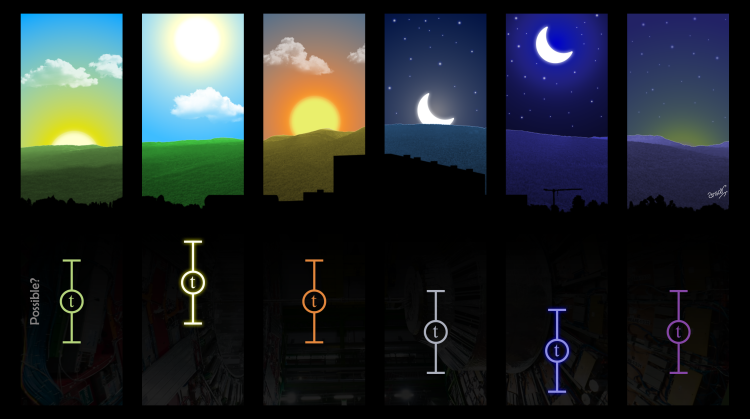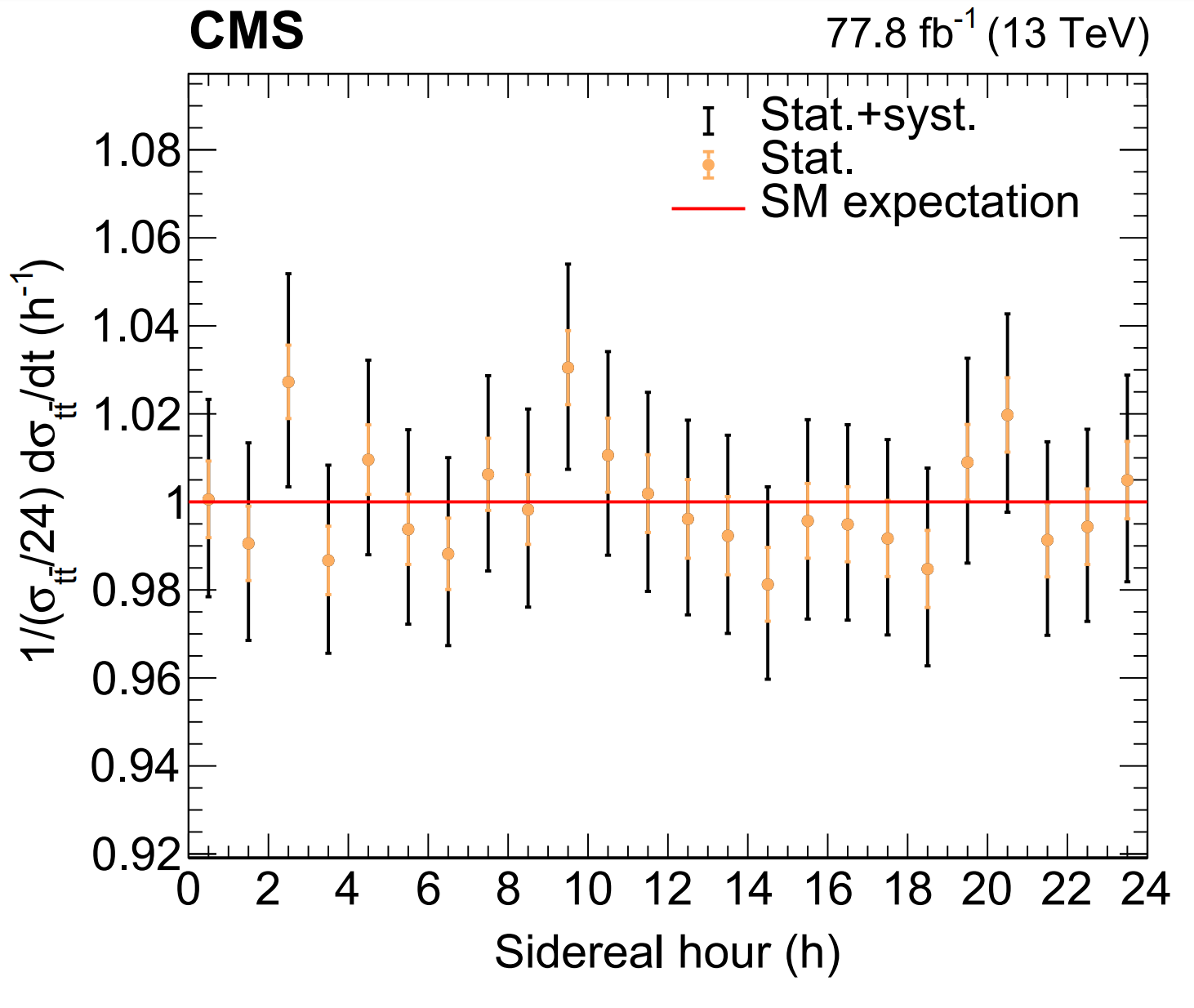
In a first measurement of its kind at the LHC, the CMS experiment tests whether top quarks adhere to Einstein’s special theory of relativity, and improves the bounds on noncompliance by up to a factor of one hundred with respect to previous results.
Einstein's special theory of relativity serves as the basis of the Standard Model of particle physics. At the heart of special relativity is a concept called Lorentz invariance: experimental results are independent of the orientation or the boost velocity of the observer.
Special relativity has stood the test of time. However, some theories, for instance particular models of string theory, predict that at very high energies, special relativity will no longer work. In particular, experimental observations could become dependent on the orientation of the experiment in space-time. Remnants of such Lorentz symmetry breaking could be observable at lower energies, such as at the energies of the LHC.
Scientists at the CMS experiment just published a new search for the violation of Lorentz invariance at the LHC with a pair of top quarks. Top quarks are the most massive elementary particles ever observed, for which many theories predict potential deviations from the Standard Model. A dependence on the orientation, also called anisotropy, would mean that the rate of top quark pairs produced in proton proton collisions at the LHC could vary as a function of time.
More precisely, since the earth is rotating around its axis, the LHC beam and the average direction of top quarks produced in collisions at the center of the CMS detector also changes depending on the time of the day. As a consequence, and if there is a preferred direction in the reference frame of the solar system, the top quark production rate would oscillate as a function of the time of the day. Hence, finding a deviation from a constant rate would amount to discovering an anisotropy (or preferential direction) in space-time.

Above: Normalized rate of top quark pair production as a function of the hour of the day in the reference frame of the sun (sidereal hour).
So far, the results agree with a constant rate, and Einstein’s special relativity remains valid. In order to parametrize slight potential deviations of this rate, the measurement is interpreted in a framework called the “Standard Model Extension” (SME) by putting constraints on coefficients whose values away from zero would indicate deviations from the Standard Model. The obtained results improve the previous measurement at the Tevatron (Fermilab) in 2012 by up to a factor of 100.

Above: Values of SME coefficients parametrizing the deviation from the Standard Model (Standard Model expectation is zero).
This measurement, whose precision is dominated by systematic uncertainties, can be enhanced at Run 3 by using improved analysis techniques. Being performed in the relatively unconstrained area of the top quark sector, it also opens the door to the scrutiny of processes with other heavy particles produced at the LHC, which cannot be produced at any other machine.
Read more about these results:
-
CMS Publication (TOP-22-007): " Searches for violation of Lorentz invariance in tt production using dilepton events in proton-proton collisions at 13 TeV "
-
@CMSExperiment on social media: LinkedIn - Facebook - Twitter - Instagram
- Do you like these briefings and want to get an email notification when there is a new one? Subscribe here

